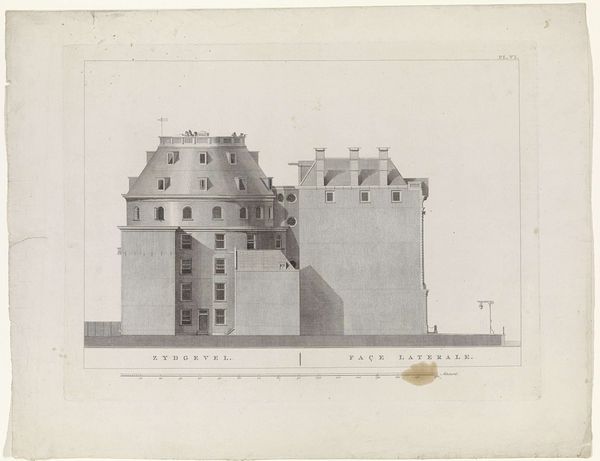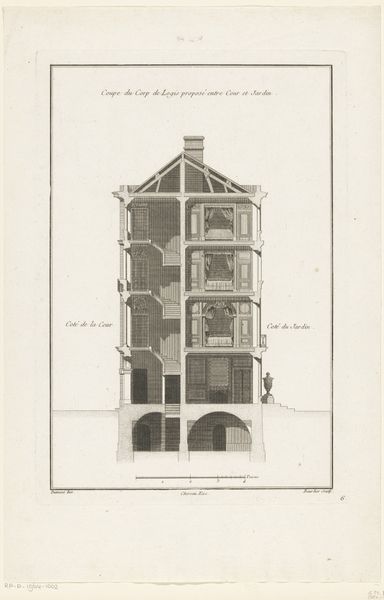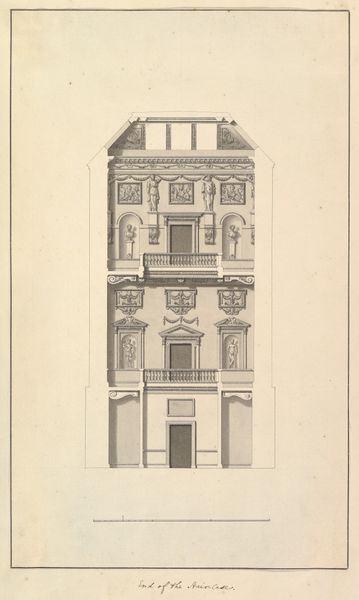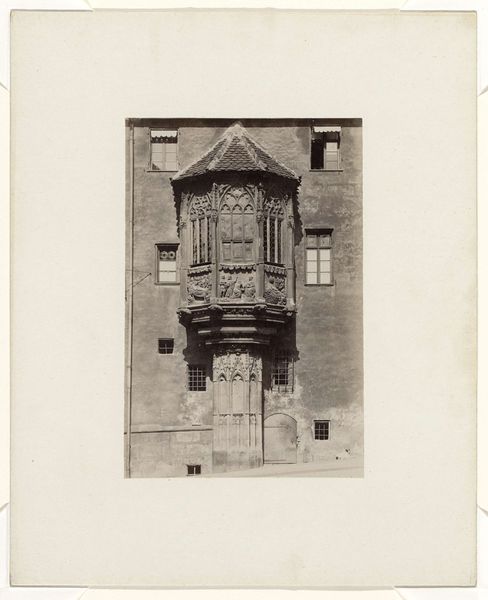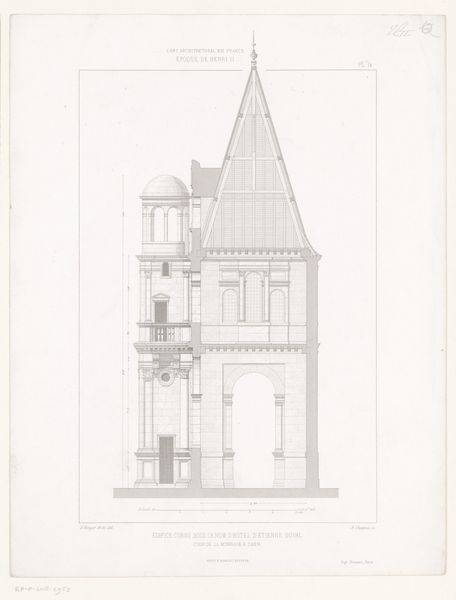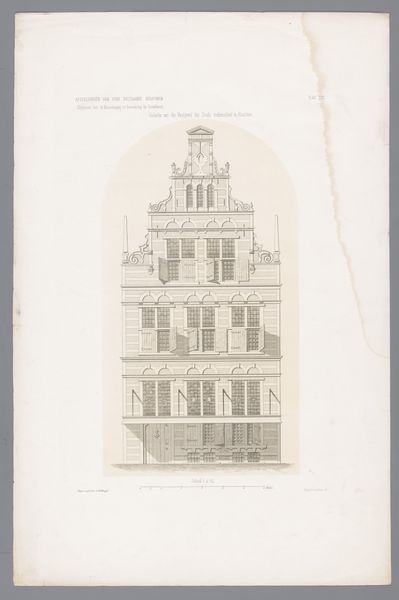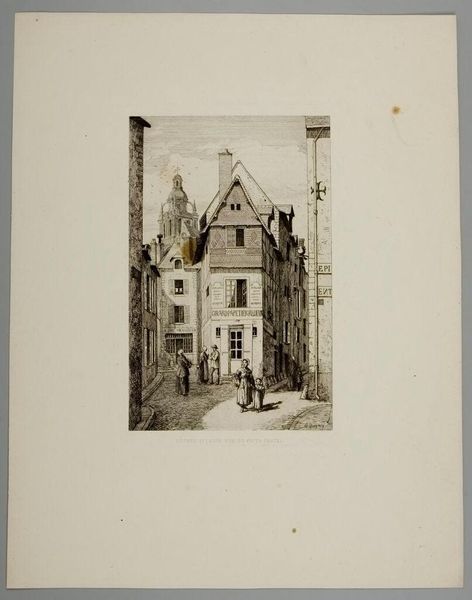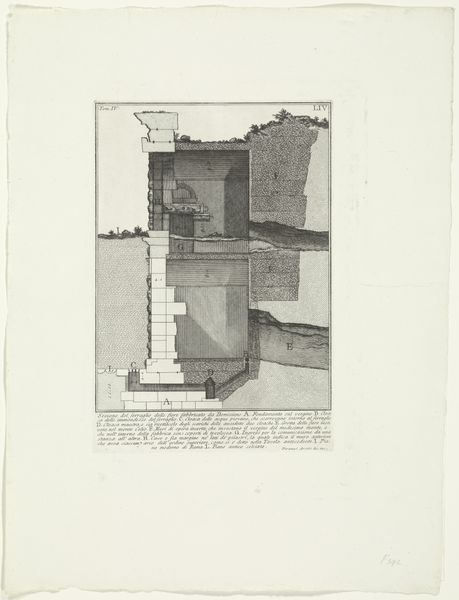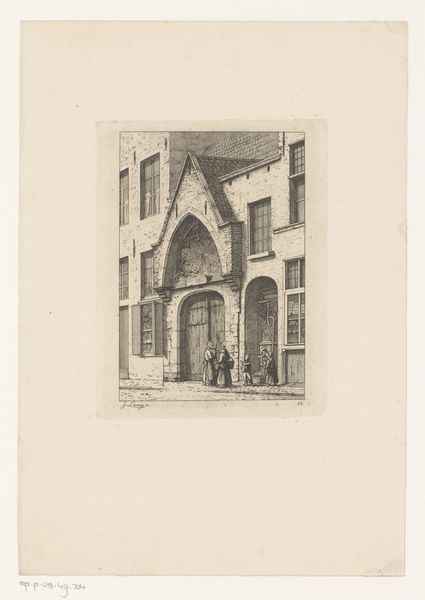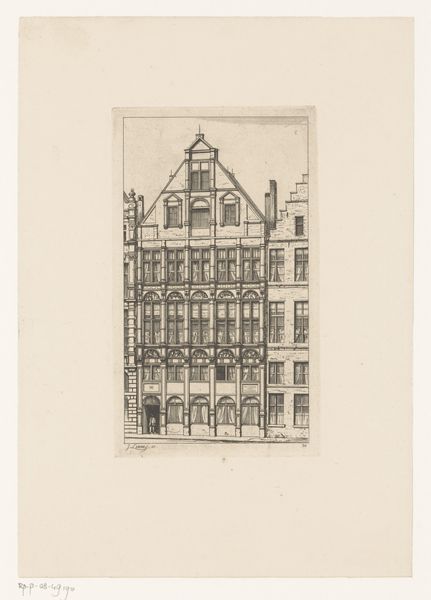
drawing, print, etching, architecture
#
drawing
#
neoclacissism
# print
#
etching
#
geometric
#
cityscape
#
architecture
Dimensions: height 547 mm, width 415 mm
Copyright: Rijks Museum: Open Domain
Curator: This detailed etching, "Achtergevel van Felix Meritis te Amsterdam," rendered between 1789 and 1799 by Noach van der Meer the Younger, captures the rear facade of the famed Felix Meritis building in Amsterdam. The architectural print adheres to the Neoclassical style. What’s your initial take on this, considering its formal presentation? Editor: It's rather stark, isn’t it? Very linear and precise, lacking any sort of romanticism one might associate with architectural renderings of the era. The cool, gray tones emphasize a sense of intellectual detachment. It feels less like an artwork and more like a blueprint. Curator: Exactly! And that's quite intentional. Neoclassicism embraced rationality, and this print conveys that through its precise geometry. The facade itself—observe the careful arrangements of windows, the clear definition of form—mirrors Enlightenment ideals of order and reason. The lack of overt ornamentation places function above elaborate decoration. Editor: Yes, I can see that. The severe symmetry emphasizes that. Tell me, who *were* they trying to impress with this back view, though? Backs of buildings rarely become iconic! Curator: The Felix Meritis was designed as a center for the Enlightenment. It housed scientific societies, lecture halls, and an astronomical observatory. Visuals like this aren't mere portrayals, but powerful status signifiers reflecting the power of these institutions. Editor: Ah, so the print would have served as propaganda! A way to visually broadcast their principles of clarity, structure, and societal importance. It does make me wonder who the intended audience was, though? Fellow architects, wealthy benefactors...or the city council? Curator: More likely a discerning audience involved in civic life and scientific pursuits. Prints like this circulated among educated elites who admired these ideals. Remember, access to images was more restricted then, so possessing a detailed depiction would denote intellectual status. Also, notice the use of geometric motifs to add some form of harmony. Editor: Indeed. Reflecting upon it, that cool detachment resonates with that very exclusive culture of the period, almost clinical in its aesthetic purity. It projects not just an architectural design, but also the socio-political ideals the building embodied at the time. Curator: Precisely. It's a visual embodiment of an era's ambitions, anxieties and intellectual values frozen in lines and geometric shape. It tells stories beyond the structure itself. Editor: I concur entirely!
Comments
No comments
Be the first to comment and join the conversation on the ultimate creative platform.

